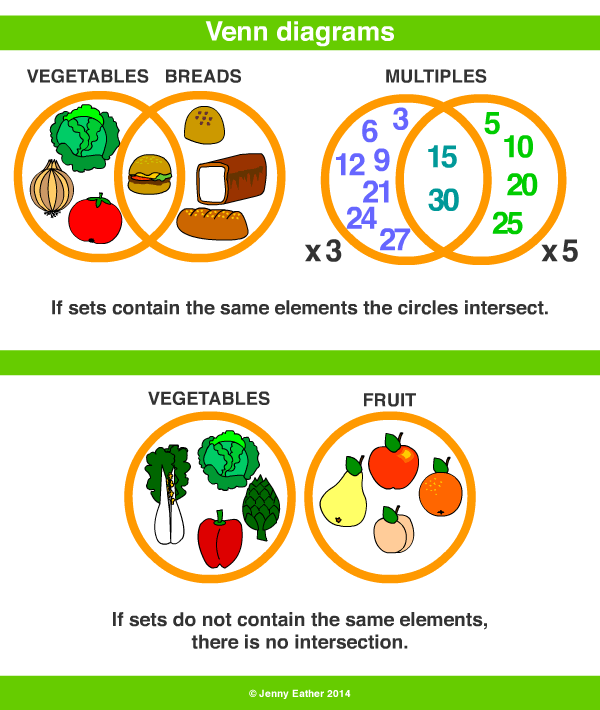What is a Venn Diagram?
A Venn diagram is an illustration that uses circles to show the relationships among things or finite groups of things. Circles that overlap have a commonality while circles that do not overlap do not share those traits.
Venn diagrams help to visually represent the similarities and differences between two concepts.
Understanding Venn Diagrams
Venn diagrams are useful for illustrating how different concepts or factors intersect with one another. They can show, at a glance, how things are similar or different and where and how they overlap. Often, the center of a Venn diagram (the intersection of two or more circles) represents some nexus or main idea that can be decomposed into the various other circles, with labels on the outer portions more general and distinct ideas than those toward the center.
The overlapping areas can also be used to show where two otherwise disparate contexts share commonalities. For instance, in the example diagram below we see that while the urban and rural contexts are distinct with their own set of activities, they also do share sporting events.
Venn Diagram in Math
A Venn diagram in math is used in logic theory and set theory to show various sets or data and their relationship with each other.
How do you read a Venn Diagram?
A Venn diagram is read by observing all of the circles that make up the entire diagram. Each circle is its own item or data set. The portions of the circles that overlap indicate the areas that are in common amongst the different items whereas the parts that do not overlap indicate unique traits among the item or data set represented by the circle.
Why Are They Called Venn Diagrams?
They are called Venn diagrams because the diagram was developed by John Venn, an English logician.
What Is the Middle of a Venn Diagram Called?
The middle of a Venn diagram where two or more sets overlap is known as the intersection.
Does a Venn Diagram Always Use 2 or 3 Circles?
While often employing a pair or triplet of circles, Venn diagram can use any number of circles (or any other shape) to show the differences and intersections of different sets.
Example Venn diagram
Say our universe is pets, and we want to compare which type of pet our family might agree on.
Set A contains my preferences: dog, bird, hamster.
Set B contains Family Member B’s preferences: dog, cat, fish.
Set C contains Family Member C’s preferences: dog, cat, turtle, snake.
The overlap, or intersection, of the three sets contains only dog. Looks like we’re getting a dog.
Of course, Venn diagrams can get a lot more involved than that, as they are used extensively in various fields.
Venn diagram purpose and benefits
- To visually organize information to see the relationship between sets of items, such as commonalities and differences. Students and professionals can use them to think through the logic behind a concept and to depict the relationships for visual communication. This purpose can range from elementary to highly advanced.
- To compare two or more choices and clearly see what they have in common versus what might distinguish them. This might be done for selecting an important product or service to buy.
- To solve complex mathematical problems. Assuming you’re a mathematician, of course.
- To compare data sets, find correlations and predict probabilities of certain occurrences.
- To reason through the logic behind statements or equations, such as the Boolean logic behind a word search involving “or” and “and” statements and how they’re grouped.



